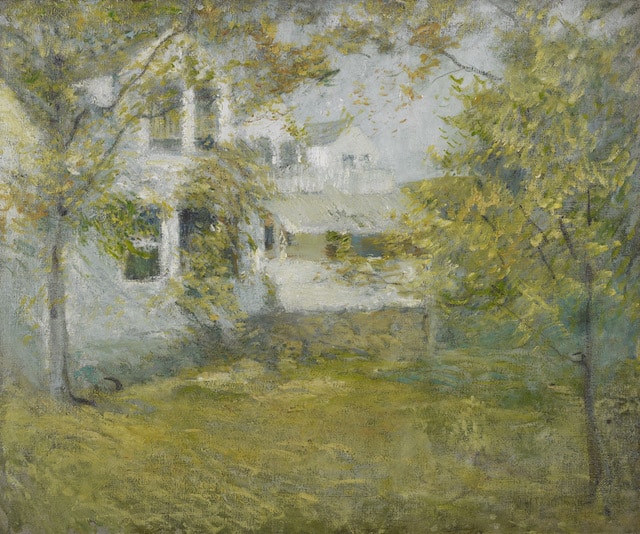October 19, 2022 - January 22, 2023
Exhibition Honorary Committee:
Cross Family Charitable Fund
Susan and David Brownwood
Connie and Thomas P. Clephane
Alexandra and Peter Cummiskey
Carolyn and Maurice Cunniffe
Patricia and John Klingenstein
Susan and James Larkin
Isabel and Peter Malkin
John Nelson
Lindsay and David Ormsby
Lucy and Larry Ricciardi
Deborah and Chuck Royce
Davidde and Ronald Strackbein
Reba and Dave Williams
The Cincinnati-born artist John Twachtman (1853–1902) reached artistic maturity while living from 1890 to 1899 in Greenwich, Connecticut. There he created the paintings of his home and property for which he earned a reputation as the most original of the leading American Impressionists.
The exhibition, Life and Art: The Greenwich Paintings of John Henry Twachtman, takes a unique holistic approach to Twachtman’s Greenwich oeuvre, considering it in a unified context, as one encompassing both the aesthetic modifications the artist made with land and architecture as his mediums and the images he derived from this subject matter.
From the beginning of his career, Twachtman was committed to creating landscape paintings in the realist tradition, seeking inspiration from his immediate observations, at home in America and on trips to Europe. However, he struggled with the realization that nature did not provide a sense of completeness he believed to be essential to art. In Greenwich he satisfied his desire for completeness by depicting a setting he was able to shape himself.
This exhibition reveals the developments that occurred concurrently as Twachtman met this aim. Whereas at first he sought to establish a harmonious relationship between his home and the existing landscape, gradually he took more control of his environment, turning his home ground into a work of art in its own right. In the process, he became less beholden to nature, imposing aesthetic control over his surroundings. His paintings parallel this progression, demonstrating the way that life and art came together for Twachtman in Greenwich, making his Greenwich art a form of autobiography. As Charles Caffin aptly noted in his 1907 Story of American Painting, in Greenwich, Twachtman “absorbed the facts of his surroundings so completely that their very spirit entered into him, and it was the spirit that he strove to render.”
Life and Art is curated by Lisa N. Peters. Ph.D., an independent scholar and the author of John Henry Twachtman: An American Impressionist (High Museum of Art, 1999), among other publications on Twachtman and American art.
Life and Art: The Greenwich Paintings of John Henry Twachtman
is generously supported by the Henry Luce Foundation for American Art and First Republic Bank.
The exhibition catalogue is made possible by a grant from the Wyeth Foundation for American Art. The architectural study of the John Henry Twachtman house was made possible by the Jane Henson Foundation, Charles Hilton Architects and John Nelson.
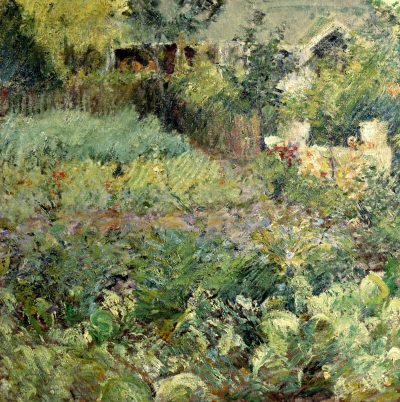
Life and Art: The Greenwich Paintings of John Henry Twachtman
The Special Exhibitions Gallery featuring Life and Art: The Greenwich Paintings of John Henry Twachtman is open Wednesday through Sunday from 12:00 – 4:00 p.m. with museum admission.
Programs and Events
Life and Art will be accompanied by a series of exhibition-related programs, including weekly guided tours, a curator's talk, art lecture and en plein air painting class.
Life and Art in the News

“The exhibition and its catalogue explore the interactive dynamic between art and place that occurred over time, as Twachtman’s involvement in his surroundings evolved.”
American Art Review
The Life and Art exhibition has received much critical acclaim and press coverage. Read articles featured in prestigious arts publications by visiting the news section on our website.
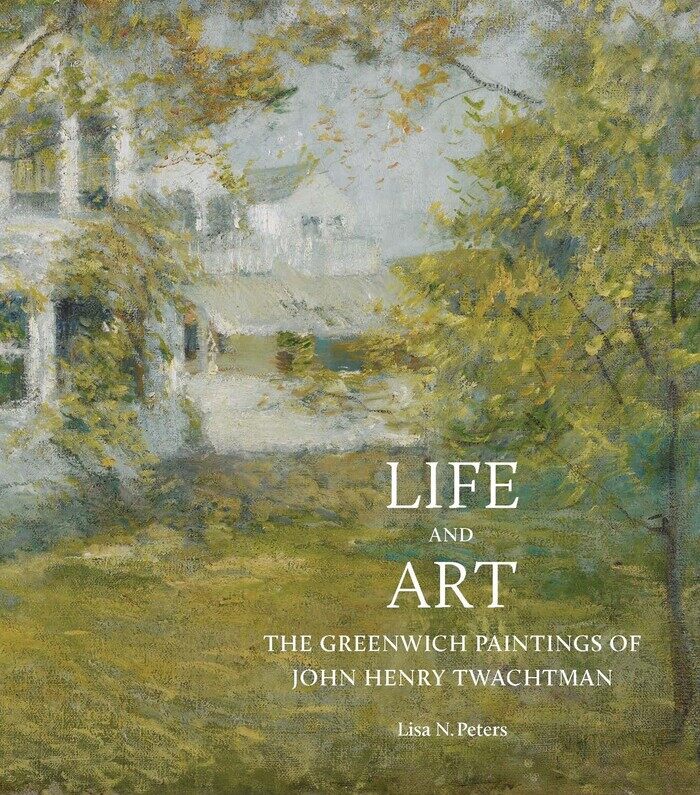
Life and Art: The Greenwich Paintings of John Henry Twachtman Exhibition Catalogue
Illustrated with artworks from the exhibition and other examples from Twachtman’s Greenwich years, the Life and Art catalogue establishes a new detailed chronology of Twachtman’s Greenwich Paintings. Discover all you need to know about John Henry Twachtman in this catalogue available for purchase online and in our very own museum store.
An Artist’s Home
An important aim of this exhibition has been to establish a clear chronology of the changes Twachtman made to his home during his Greenwich years. This was achieved through a close examination of the house itself (privately owned today), a careful study of Twachtman’s works (which he did not date after 1883), and consultation of historical sources. By exhibiting varied images of Twachtman’s home, this show provides an opportunity not only to see the way the dwelling evolved (look for the changing number of chimneys on the home) but also to enter into Twachtman’s world, as he reconciled the needs of his family with his desire to match his artistic ideals to the reality of his environment.
In his paintings, Twachtman both chronicled the changes he made to his home and expressed his personal responses to this subject matter. Capturing his home from many perspectives over the years provided him with a means of self-reflection. His images ask us to consider the ways we have shaped our own homes and how they are part of who we are.
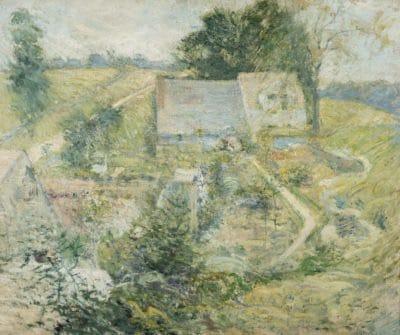
An Artist’s Land
In his Greenwich paintings, Twachtman depicted his home in relation to the land, but he also portrayed aspects of his property to which he had contributed in both subtle and overt ways. Through intimate vantage points, he conveyed his presence in views of the Hemlock Pool, a calm, rock-edged body of water to the west of his home. He created images of the Japanese-inspired white bridges crossing over Horseneck Brook that he built to add a sense of artistic refinement to the landscape rather than to serve a practical purpose. He returned repeatedly to Horseneck Falls, the steepest cascade on the brook, creating close-ups of the water falling over rocks, creating images that are almost fully abstract in reductive designs and dynamic painterly surfaces. In the arrested movement in his waterfalls, he summed up the simultaneous vitality and stability of his Greenwich life.
John Henry Twachtman in Brief
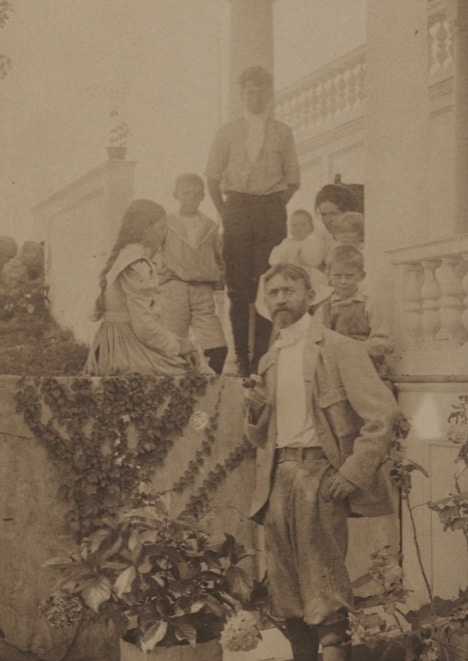
On February 18, 1890, after at first renting a cottage in Greenwich, Twachtman purchased three acres of land two miles north of the main section of the town, between Round Hill Road and Horseneck Brook. His property was located in Hangroot, an area of undulating hills named probably for the tangled roots of trees that hung around its great rock formations. At the time, its residents consisted of a few African American families, whose ancestors had been enslaved in the homes of colonial settlers in Greenwich. On December 1, 1891, Twachtman acquired an additional thirteen acres that encompassed the brook. During the 1890s, he was often viewed as the American artist whose work was closest to that of the French Impressionist Claude Monet. When the two were included in a four-artist exhibition in New York in 1893, a critic stated that Twachtman had “come nearer than any other New York artist to solving some of the problems of plein aire that Monet [had] set down.” The two artists also can be compared for the distinctive ways that each used Impressionist means to capture nuances in familiar landscapes rendered in series. After leaving his Greenwich home, Twachtman lived partly at the Players Club in New York City and at the Holley House, while spending his summers in Gloucester, Massachusetts, where he died on August 8, 1902, four days after his 49th birthday.
While living in Greenwich, Twachtman taught a summer art school in nearby Cos Cob, based at the Holley family’s boarding house (now known as the Bush-Holley House, an historic house museum operated by the Greenwich Historical Society). He was a founding member in 1898 of the Ten American Painters, the group of artists who broke from the Society of American Artists to hold exhibitions exclusively of their own work, in the mode of the independent exhibitions of the French Impressionists. A “painter’s painter,” Twachtman was revered by fellow artists but unsuccessful at marketing and selling his work. During his lifetime, he was viewed as a modern artist, whose work—too advanced for his own time—would only receive its due recognition in the future.
Twachtman’s Road to Greenwich: Lecture with Dr Lisa N Peters celebrating the Launch of the John Henry Twachtman Catalogue Raisonné
The Greenwich Historical Society is pleased to mark the debut of the John Henry Twachtman Catalogue Raisonné with an illustrated virtual talk by Lisa N. Peters, Ph.D., tracing John Henry Twachtman’s road to Greenwich, where he lived with his family from 1890 to 1899 and created the Impressionist works for which he is best known. Dr. Peters will chart Twachtman’s artistic career through focus on a few key works, from his early days in Cincinnati, to European study and travel, to New York City, and finally to Greenwich.
Following the lecture Dr. Peters is joined by Greenwich Historical Society Curator of Exhibitions and Collections Maggie Dimock for a discussion about Twachtman’s continued legacy and the rich information available to researchers and art lovers in the John Henry Twachtman Catalogue Raisonné.
This virtual event was held in celebration of the public launch of the John Henry Twachtman Catalogue Raisonné, a collaboration between Dr. Peters and the Greenwich Historical Society. The John Henry Twachtman Catalogue Raisonné is a free digital resource offering detailed records of Twachtman’s oeuvre, life, exhibitions, and other material including correspondence and entries for every known artwork by the artist. It is accessible at www.jhtwachtman.org
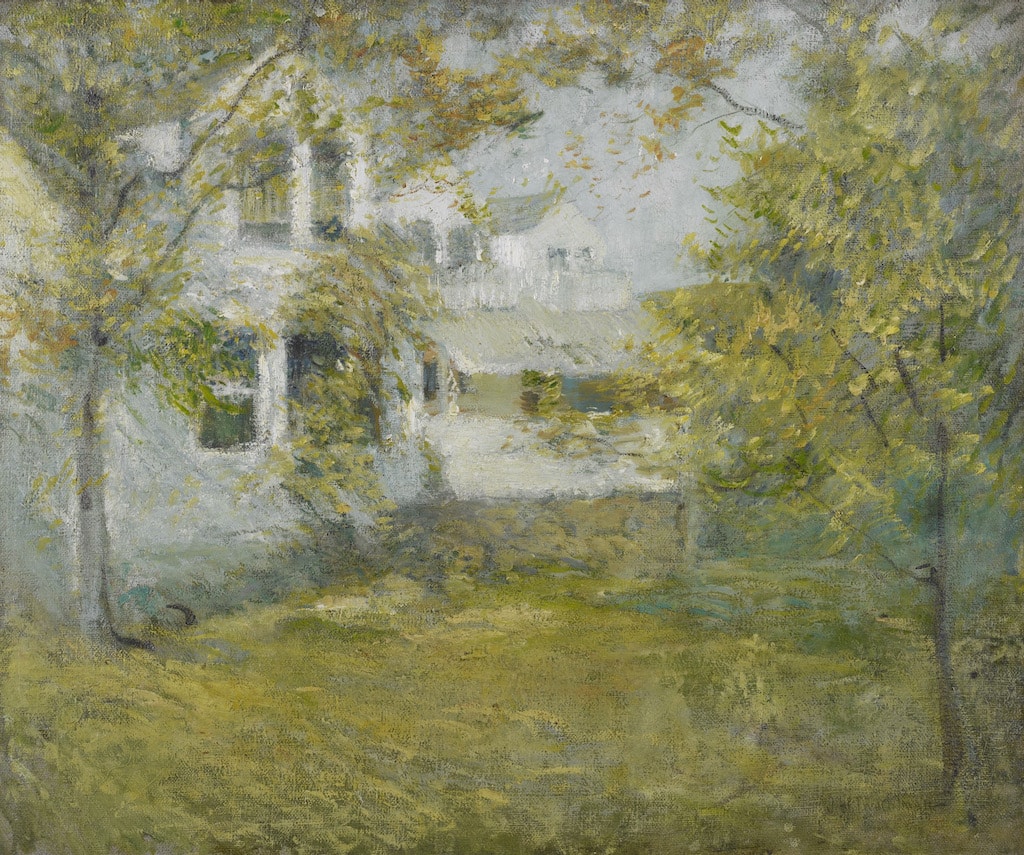
The John Henry Twachtman Catalogue Raisonné
The Greenwich Historical Society is thrilled to be the host institution of the John Henry Twachtman Catalogue Raisonné.
The result of over twenty-five years of research and development by Lisa N. Peters, Ph.D., the John Henry Twachtman Catalogue Raisonné is the definitive online publication documenting over 750 works by the noted American Impressionist. This free digital resource offers a detailed record of the artist’s oeuvre, life, exhibitions and other material including correspondence and essay entries for every known artwork completed by the artist. Twachtman, who lived in Greenwich from 1890 to 1899, is widely considered among the most original of the leading American Impressionists, and was largely responsible for cultivating the late nineteenth-century artist’s colony that grew around the Holley boarding house in Cos Cob.
The John Henry Twachtman Catalogue Raisonné is generously supported by the Horowitz Foundation for the Arts, the Cross Family Charitable Fund, and the Lunder Foundation.
